Jinan World First Spring Scenic Area
Jinan World No. 1 Spring Scenic Area, located in the center of Jinan City, Shandong Province, is a national AAAAA-level tourist attraction, national key park, advanced unit of national spiritual civilization construction and national scenic spot.
The scenic area covers a total area of 3.1 square kilometers. It consists of "one River (moat), one lake (Daming Lake), three springs (Baotu Spring, Black Tiger Spring and Wulongtan Spring Group) and four gardens (Baotu Spring Park, Huancheng Park, Wulongtan Park and Daming Lake Scenic Area)", which is a unique natural landscape and a profound historical and cultural heritage. An integrated tourist attraction.
The scenic spot has a long history. Potu Spring, known as "Potu Spring" in ancient times, is recorded in Spring and Autumn Period. In the eighteenth year of Luhuangong (694 B.C.), the "Gong Hui Qihou Yu" was named as "Potu Spring" by Zeng Gong of the Song Dynasty. The moat, built in the Han Dynasty and formed in the Yuan Dynasty, runs through the Ming Dynasty completely. The Chronicle of Licheng County records the four years of Hongwu in the Ming Dynasty. The moat surrounds the city with a width of five feet and a depth of three feet. It is a city river that connects the Spring Lake and accompanies the historical civilization of the spring city. Daming Lake, formerly known as Lishuipi Lake, Lianzi Lake and West Lake, was recorded in the Notes to the Water Classic of the Northern Wei Dynasty as "Daming Lake" in which Yuanhaowen of the Jinan Dynasty began to call it "Daming Lake". Ming Lake. The scenic spot takes the first spring in the world as the core, and the springs flow into rivers and lakes, which are interdependent with the ancient city of Mingfu. The springs, rivers, lakes and cities are integrated, which shows the unique scenery of spring waters.
There are 71 Famous Springs gathered in the three most famous springs in Quancheng: Baotu Spring, Black Tiger Spring and Wulongtan Spring. The number, beauty of form, excellent water quality, rich history and culture, and the value of popular science and research are among the best in the world. Daming Lake is a natural lake formed by many springs, whose water flows from the Hunan shore and flows from the lake when it is full. Beishuimen, built in the Song Dynasty, flowed out. The bottom of the lake was composed of impermeable igneous rocks, with constant rain and drought. It was known as "the confluence of springs, swallowing up the water for the sake of relief". It was praised as "the pearl of the spring city", "three willows with lotus flowers on all sides, and half-city lake with mountain color on all sides" as her best portrayal; It was protected by the confluence of springs. The Chenghe River, like a jade belt around the ancient city and a necklace connecting scenic spots, is a 6.9-kilometer-long waterway with hundreds of sceneries. Traveling along the moat, you can see the black tiger roaring the moon, soaring into the sky, Yueyuan Qifeng, Longtan Guanyu, Yueya waterfall, magpie China smoke and rain, Huibo late sunshine, Qiuliu smoky, transcendent and elegant. More than 310 scenic spots, such as Yuandi and Zengdi lingshui, have formed a unique spring sightseeing landscape belt with unique resources, beautiful scenery, rich culture, complete preservation and unique national characteristics, which makes tourists "enjoy the scenery without going out of the city, live in busy city and have forest springs", and become an important part of the characteristic sign area of Quancheng.
The scenic spot has beautiful natural scenery and profound humanistic connotation. Besides the Quanhe Lake, there are more than 200 humanistic landscapes and architectural sketches. There are more than 20 important humanistic buildings, including the transcendent building on the first floor of Jiangbei in the Yuan Dynasty, the Yuanyuan Hall, the Eying Temple and the Three Sacred Halls (collectively known as the Three Palaces), which were built in the Northern Wei Dynasty and the Ming Dynasty. There are also Wanzhu Garden, Lixia Pavilion, White Snow Tower, Cangyuan, Shangzhitang Hall, Qiuliu Garden, Huanyuan Garden, Pillow Lake Building, Guanlan Pavilion, Quehua Bridge, Laihe Bridge, Wanghe Pavilion, Hexagonal Stream Pavilion, Fengxi Fan Pavilion, Deyue Pavilion, Yuexian Pavilion, Tianxinshui Pavilion, Xiaocanglang Pavilion, etc. Beishuimen, Huibo Tower, Mingchang Zhongting, the old site of Guli Pavilion, Tanxi Hakka Night Monument, etc. Celebrities'former residences include five places: Nanfeng Temple in memory of Zeng Gong, a famous writer of the Northern Song Dynasty and one of the eight great poets of the Tang and Song Dynasties, Jiaxuan Temple in memory of Xin Qiji, a patriotic hero of the Southern Song Dynasty, and Li Qingzhao Ji, a famous euphemistic poetess of the Song Dynas The Memorial Hall and the old residence of Yi'an, the Tie Gong Temple to commemorate Shangshu Tiehyun of the Ming Dynasty Military Department, the "Lao She and Jinan" exhibition hall to commemorate the modern literary hero's Lao She, etc. Six historical memorial buildings are: the 53rd Pavilion, the 53rd Monument, the Jinan Tragedy Memorial Hall, the old site of the Shandong Provisional Command of the Communist Party of China, the former site of the Kuomintang's Jinan Campai There are five famous stones in Taihu Lake: Turtle Stone (the relics of Zhang Yanghao Yunzhuang Villa, a Sanqu artist in Yuan Dynasty, which is the first stone in Jinan and the four spiritual stones of Dragon, Wind and Linshi), as well as Wai Yuefeng, Qian Shi, Shoushi and Geshi. Among them, Yuanyuan Hall, Lixia Pavilion and Tieguangci Temple are municipal cultural relics protection units, Daming Lake and Wanzhuyuan are provincial cultural relics protection units, and the old sites of Shandong Provincial Leading Organs of the Communist Party of China, the May 3rd Memorial Park and Jiefang Pavilion are not only revolutionary historical relics, but also patriotic education bases in Shandong Province.
The scenic spot has profound cultural connotations and rich humanistic activities. More than ten large-scale traditional cultural activities are held all the year round, which reflects the unique folk cultural characteristics of Jinan in Quancheng.
geographical position
The world's first spring scenic spot is located in the center of Jinan City, capital of Shandong Province. It has superior location and convenient transportation. It has 36.678402 latitude in the north and 117.022975 longitude in the east.
The scenic spot consists of "one River (moat), one lake (Daming Lake), three springs (Baotuquan, Heihuquan, Wulongtan three springs group) and four gardens (Baotuquan Park, Huancheng Park, Wulongtan Park, Daming Lake Scenic Area)", which is a fine tourism with unique natural landscape and profound historical and cultural heritage. The scenic spot, with a total area of 3.1 square kilometers, is a national 5A scenic spot, a national key park, an advanced unit of national spiritual civilization construction and a national scenic spot.
Climatic characteristics
Jinan Tianxia No. 1 Spring Scenic Area is located in the mid-latitude zone, which belongs to the warm temperate continental monsoon climate. Its main climatic characteristics are: obvious monsoon, distinct seasons; cold winter and hot summer, concentrated rainfall.
Spring is warm and windy, summer is hot and rainy, autumn is wet and cool, winter is cold and snowy. The average annual temperature is 14.5 C. The extreme maximum air temperature is 42.3 C and the minimum air temperature is - 15.5 C. July is the hottest month in a year, with an average temperature of 31.9 C and the coldest month in January, with an average temperature of -2 C. The annual average precipitation is 664.9 mm, which varies greatly from year to year. The annual distribution is uneven, mainly concentrated in the four months of June, July, August and September.
Scenery of scenic spots
Baotu Spring Scenic Area
Potu Spring, also known as Jiquan, was formerly called Potu Spring, which was the source of Potu Spring. The three springs are closely arranged in a line, bursting out in unison and with great momentum. Therefore, they were called "the first spring" by Emperor Qianlong, and are the first of 72 springs in Jinan, Quancheng. Zeng Gong of the Song Dynasty named it Baotuquan. It also has the names of "Jiquan", "E Ying Shui", "Hot Spring", "Waterfall Water" and "Sangu Shui". The so-called "Baotu" means to leap and rush, which reflects the characteristics of the three caves of Baotu Spring.
Duo Daoyuan of the Northern Wei Dynasty wrote in the Annotation of Shui Jing: "The water surges like a wheel on the fountain, highlighting the snow waves several feet, sounding like a hidden thunderbolt." Yuan Haowen, a poet of the Jin Dynasty, described it as "Looking at the Jade Pagoda between the waves". Zhao Mengfu, a famous painter and poet of the Yuan Dynasty, compared it with "the white Jade Pot gushing from the flat ground". He Shaoji, a poet of the Qing Dynasty, described it as "all the Candida pearls flying backwards". Liu Kuo, a poet of the Qing Dynasty, wrote in Travel Notes of the Old Residual: "Three Springs emerge from the bottom of the pool and rise two or three feet above the water." "Licheng County Chronicle" in the most detailed description of Baotu Spring: "Pingdi Spring source boiling three caves protruded snow waves several feet, sound like a hidden thunder, winter and summer as one." Pu Songling, a famous writer, thinks that Potu Spring is "the first famous spring in the sea and the best place in Qimen".
Potu spring water gushes out from underground limestone caves with a maximum gushing volume of 240,000 cubic meters per day and an exposure elevation of 26.49 meters. The water is clear, the water quality is mellow and sweet, and the bacteria content is very low. After testing, it meets the national drinking water standard and is an ideal natural drinking water. "Butuo Tengkong" was the first of the eight scenic spots in Jinan in the Ming and Qing Dynasties. Spring water is constant at about 18 degrees Celsius all the year round. In severe winter, the water vapor curls over the water like a thin layer of smoke. On the one hand, the spring pool is deep and sparkling. On the other hand, the pavilions are painted and the beams are carved. It forms a wonderful fairyland on earth. Locals call it "steaming mist and moist clouds". Potu Spring is a very ideal drinking water because of its clear and transparent water and delicious taste. According to legend, Emperor Qianlong went down to the south of the Yangtze River and took Beijing Yuquan water when he left Beijing. After tasting Baotu spring water in Jinan, he immediately changed to Baotu spring water and sealed Baotu spring as "the first spring in the world". Goldfish are kept in the spring pond. The elder is over three feet long. Heqiao Hope Heting Tea Club is located on the east side of the spring. It is specially designed to provide scented tea brewed with Baotu Spring water for visitors.
Nowadays, there is the Song Dynasty building "Yuanyuan Tang" (now rebuilt in Qing Dynasty) in the north of Potuquan Spring. On both sides of the hall pillars hang the couplet of "clouds and mists are moist and steaming without note, and the sound of waves shocks Daming Lake". In the southwest, there are Ming Dynasty buildings "Guanlan Pavilion", stone tablets standing in front of the pavilion, and the three words "Potu Spring" written by Hu Zhizong, a calligrapher of Ming Dynasty. Written: Chidong is "Laihe Bridge". At the southern end of the bridge stands an ancient wooden archway with the words "Dong Tianfudi" and "Pengshan Old Site" on the banner.
Potu Spring Park includes Potu Spring, Shuyu Spring, Ma Ruiquan, Huanghua Spring, Dukang Spring, Cangquan, Golden Line Spring, Wangshui Spring, Yifeiyue Spring and many other famous springs. Basically, the main springs of Potu Spring Group are in the park. There is Li Qingzhao Memorial Hall of Song Dynasty poetess beside Shuyuquan. There are Wanzhu Garden, Tong Paradise Garden and Cang Garden on the west side of the park.
Daming Lake Scenic Area
Daming Lake, Qianfo Mountain and Baotu Spring are the three major scenic spots in Jinan. The natural lake in the bustling city is an important scenic spot and open window of Quancheng. It is a famous tourist attraction both at home and abroad, and is known as the "Pearl of Quancheng". Located in the northeast of Jinan city center and the north of the old urban area. Daming Lake is a natural lake formed by the confluence of many springs in the city. It covers a very large area, accounting for almost a quarter of the old city. After the urban springs converge here, they flow into Xiaoqing River through Beishimen. The Lake area is 58 hectares and the park area is 103.4 hectares. The Lake area accounts for 53% of the total. The average water depth is about 2 meters and the deepest depth is 4.5 meters.
Daming Lake has a long history, the earliest written in the Northern Wei Dynasty geographer Yun Daoyuan's Annotation of the Book of Water, which has a history of more than 1500 years. The natural scenery of Daming Lake is beautiful, with lotus leaf fields, kites flying and fishing leaps, painting boats and shuttles; the flowers and trees along the lakeside are sparse and weeping willows are sandwiched between the banks, just like a blue ink painting. Daming Lake has different scenery in four seasons, with ice in winter, waves in summer, snow in autumn and smoke in spring. The Magpies in the eight scenic spots of Jinan, the late sunshine of Huibo, the boating of Minghu Lake and the famous reflection landscape of Foshan can be seen in the scenic area. "Lotus on all sides, willow on three sides, mountain and lake in one city" is the best portrayal of its scenery. "Snakes are missing, frogs are silent", "rain is not rising, drought is not drying up" is its unique natural characteristics.
Daming Lake has rich cultural connotations and rich cultural accumulation. Millennium Pavilions, Arctic Pavilion and Huibo Tower in Song and Yuan Dynasties, Nanfeng Temple, Tieguang Temple and Huanyuan Garden in Ming and Qing Dynasties, etc. Nearly twenty scenic spots and historic sites are distributed
Around the scenic spot, strolling among them, the pace of scenery is overwhelming. Du Fu, Zeng Gong, Su Zhi, Wang Shizhen, Pu Songling, Liu Huo and other historical celebrities have gathered a large number of places of interest, and retained poems and ink treasures, which have been passed down for centuries. The scenic spot also holds four major activities every year, including Spring Festival Temple Fair, May Day, Eleventh Garden Tour Fair and Lotus Art Festival.
Five Longtan Scenic Area
Wulongtan, once known as Grey Bay Spring, is located in Wulongtan Park. According to the Annotation of Shui Jing, there was this water before the Northern Wei Dynasty, called Jingchi, which is a corner of Daming Lake. According to legend, Wulongtan used to be an unpredictable pool. In case of severe drought, prayers for rain should be answered. Therefore, good people in the Yuan Dynasty built temples near the pool and built five dragon gods in it. Since then, it has been renamed Wulongtan. In Wulongtan Park, there are 26 ancient famous springs in different forms, which constitute Wulongtan Spring Group. They are the best water quality springs among the four famous springs in Jinan.
The best time to visit is April and October. In April, the park is full of flowers and spring. There is Tanxi Tea Club in the park, which is the best place to enjoy tea.
Ancient hot spring
Located in the southeastern side of Wulongtan, it is named for its high temperature and long history. In the mid-winter season, the cold wind is brisk, the snow is flying, but the hot air is transpiring in the spring. In the Qing Dynasty, there was a ripple garden built near the spring, but it was abandoned. There is a two-storey building on the south side of the spring, which is the seat of the leading organ of the early Communist Party of China in Shandong Province.
Hanging spring
Also known as Xianqingquan, it is located on the north side of Wulongtan. The spring pool is 2.4 meters deep and irregular, reveted with natural rocks. The spring water is clear, the willows are shaded and the scenery is pleasant. Shen Tingfang, a Qing Dynasty man, wrote in A Brief Record of Xianqing Garden: "Jinan is a famous spring under heaven. There are seventy-two writers in the old biography who are protruding and pearls, while Xianqing actually has the body of two springs. "In the Qing Dynasty, there was once a unique water garden by the hanging spring. Now Langyuan has been abandoned, and people have built lofty pavilions on its old site. The scenery is also good.
Sky mirror spring
Jiangjiachi, also known as Jiangjiachi, is located at the southern end of Wulongtan. Because the spring water is clear and bright, the Sun and Moon Nebula reflects the water surface like a pendulum mirror, so it is named. Qingdaoguang's Jinan Fuzhi contains: "Tianjingquan is Jiangjiachi, Fang Guang is one mu, you can learn from Xumei. "Tianjing Spring is the second largest spring in Wulongtan Spring Group, and the water potential is very good. The algae floating in the pond and the brocade fish shuttle are very beautiful.
Seventy-three springs
Under the grape trellis on the southwest side of Wulongtan. Spring pool with natural stone revetment, exquisite and unique, spring water from the stone crevices flowed into Wulongtan. There is still a good story about the emergence of 73 springs: in the fifty-sixth year of Qianlong reign (1791), Guifu, a famous scholar, ordered people to build Jingshe in the west of Wulongtan. When excavating the foundation, the material unexpectedly digs out a spring eye, which gushes with good water potential. Guifu is delighted, guests of the banquet, invite everyone to name this spring. The names of all the people are not ideal. At last, Guifu had a good idea. For this reason, the spring was named "Seventy-three Springs". Everyone praised it. Guifu also wrote a poem: "Seventy-two famous springs, countless Five Dragon pools. For Doctor of Labor, seventy-three additional funds were raised. "
city wall park
Jinan City Ring Park, located in the old prosperous urban area, is built along the moat. The total length is 4.71 kilometers, with a total area of 26.3 hectares. The river is 10-30 meters wide. The surface area is 8.4 hectares. The green areas on both sides of the river are 10-59 meters and 12.5 hectares.
The beautiful park around the city, like a green necklace around the ancient city, links Baotu Spring, Pearl Spring, Black Tiger Spring, Wulongtan and Daming Lake to form a garden greening center featuring lakes, mountains and springs, highlighting the unique features of Quancheng, which is a fully open park with quite unique characteristics.
The layout and shape of the park not only embodies the characteristics of Jinan Spring City, but also has the artistic style of gardens in Beijing and Jiangnan. It makes lakes, mountains and springs closely linked, pavilions and corridors and springs and rocks shine with each other, and the scenery is pleasant. The trees on both sides of the park are shady, and the plant scenery and garden architecture are complementary to each other, which makes the park around the ancient city a large-scale botanical garden. The sculptures and paintings of the park embody the cultural characteristics of Jinan's "celebrities" and make the ring city park a museum of Jinan's history and culture. All kinds of buildings in the park have elegant and graceful shape and artistic characteristics, and each building can become a valuable handicraft treasure with ornamental value and historical preservation value. The park around the city has become a good place for tourists both at home and abroad to visit and for the people of Quancheng to rest and play.
Sightseeing route
Wulongtan (mark 9733
1. Shipping tour modes:
1. Wulongtan Scenic Area to Potuquan Scenic Area: Wulongtan Scenic Area East Gate of Wulongtan Park Boarding of Wulongtan Scenic Area Wharf Boarding of North Potuquan Wharf Potuquan Scenic Area
2. Wulongtan Scenic Area to Daming Lake Scenic Area: Wulongtan Scenic Area East Gate of Wulongtan Park Boarding of Wulongtan Wharf Entering Daming Lake Scenic Area
(Note: The interval ferry is operated on a one-way basis. There are three boat-taking locations: Botuquan North Wharf, Wulongtan Wharf and Daming Lake West Wharf. The operation time is 9:00-17:00, one half-hour shift. Ticket purchase by boat, 10 yuan per station)
2. Interval bus tour routes
1. Wulongtan Scenic Area to Potuquan Scenic Area: Wulongtan Scenic Area Dongmen Waiting Point of Wulongtan Scenic Area Potuquan Scenic Area Potuquan East Gate Potuquan Scenic Area
2. Wulongtan Scenic Area to Daming Lake Scenic Area: Wulongtan Scenic Area East Gate of Wulongtan Waiting for Bus Entering Daming Lake Scenic Area
(Note: The departure time is 9:00-17:00, half an hour. From the East Gate of Potuquan and the Southwest Gate of Daming Lake, the East Gate of Wulongtan Station stops immediately and goes up/down. Free one-way through train by pass.
3. Bicycle tour routes
1. Wulongtan Scenic Area to Potu Spring Scenic Area: Wulongtan Scenic Area_Dongmen Rental Bicycle of Wulongtan Scenic Area_East Gate of Potu Spring_Potu Spring Scenic Area
2. Wulongtan Scenic Area to Daming Lake Scenic Area: Wulongtan Scenic Area East Gate of Wulongtan Rental Bicycle Southwest Gate of Daming Lake Scenic Area Daming Lake Scenic Area
(Note: The leasing points are Baotuquan East Gate, Wulongtan East Gate and Daming Lake Southwest Gate, with a deposit of 500 yuan, free of charge by pass. The lease time is from 9:00 to 17:00. Tourists are required to return their bicycles to any of the above leasing points before 18:00 on the same day.
4. Walking tour routes
1. Wulongtan Scenic Spot to Potuquan Scenic Spot: Wulongtan Scenic Spot South Gate of Wulongtan Scenic Spot 60 meters east by road North Gate of Potuquan Scenic Spot Potuquan Scenic Spot
2. Wulongtan Scenic Area to Daming Lake Scenic Area: Wulongtan Scenic Area East Gate of Wulongtan 800 meters north along Bibei Road Daming Lake Scenic Area
V. Bus tour routes
1. Wulongtan Scenic Area to Potuquan Scenic Area: Wulongtan Scenic Area East Gate of Wulongtan 80 meters south, take Bus No. 66 and K54 to get off at East Gate of Potuquan Park East Gate of Potuquan Potuquan Scenic Area
2. Wulongtan Scenic Area and Daming Lake Scenic Area: Wulongtan Scenic Area East Gate of Wulongtan 80 meters south, Ximen Station by 66, K54, 41 bus Southwest Gate of Daming Lake Daming Lake Scenic Area

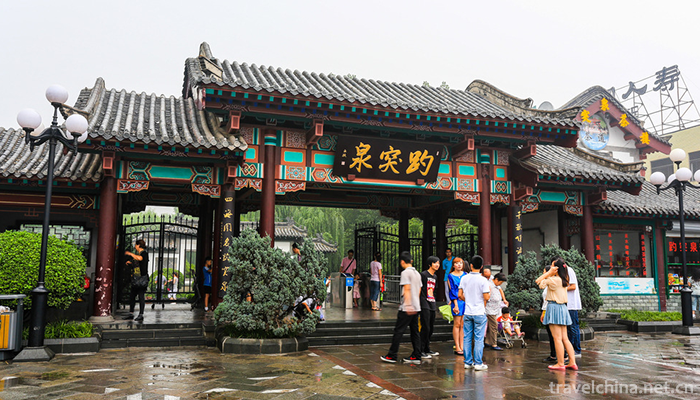
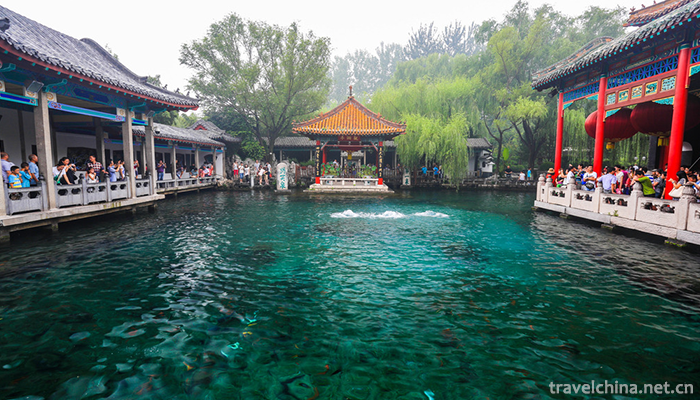
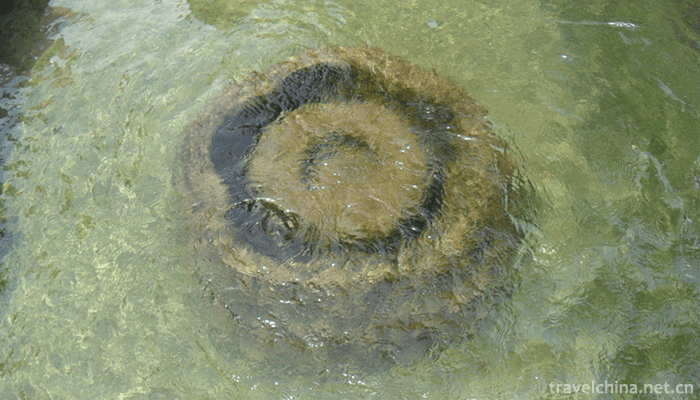
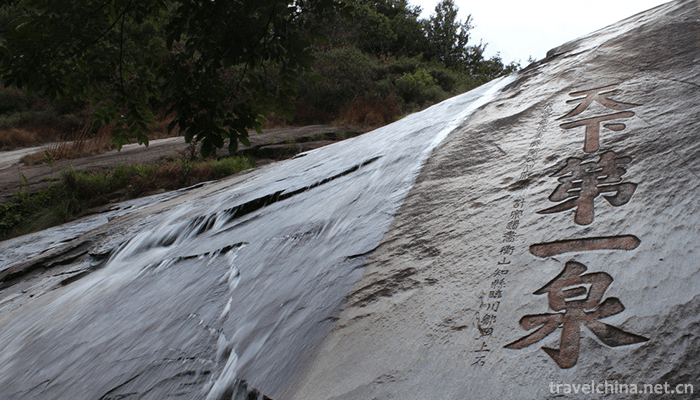
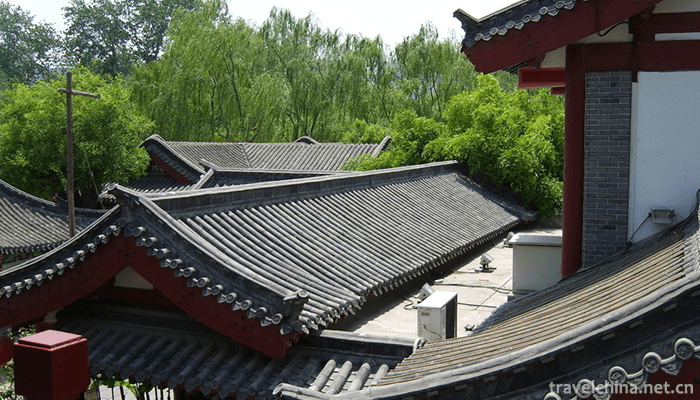
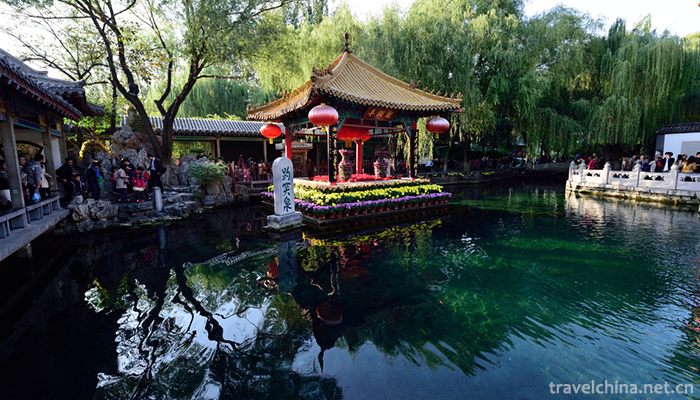

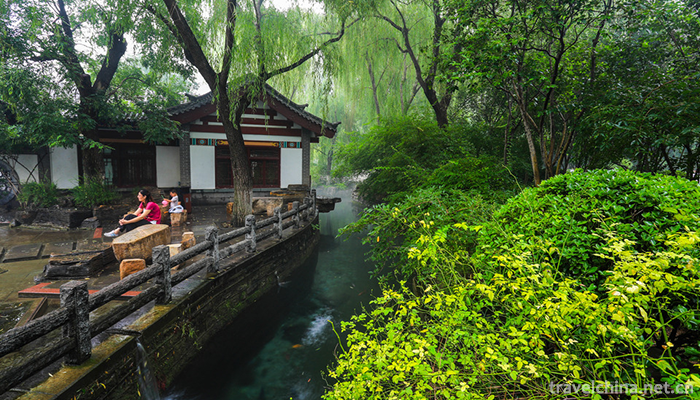
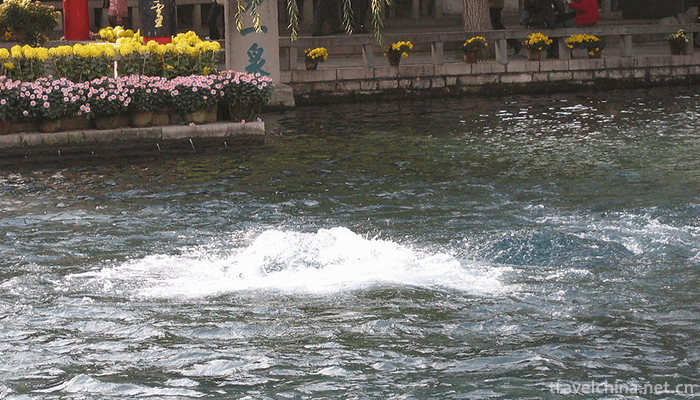
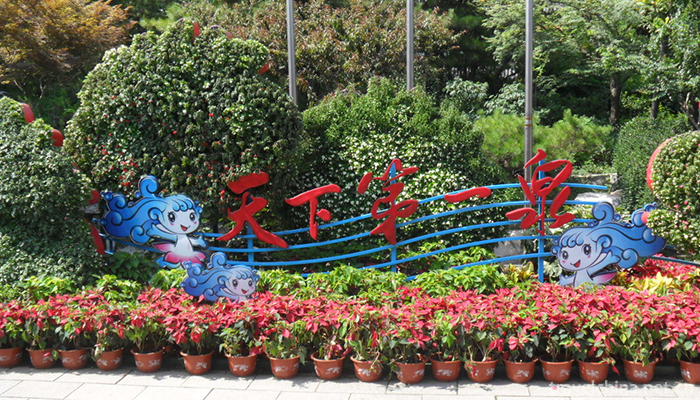
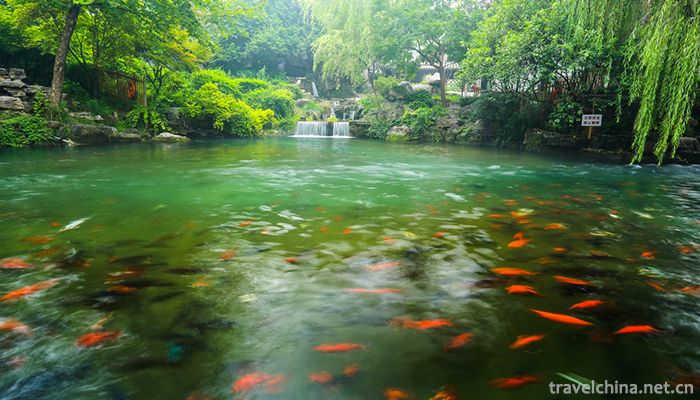
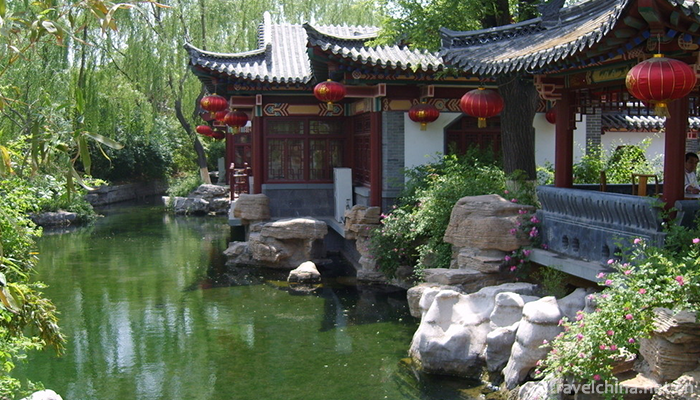
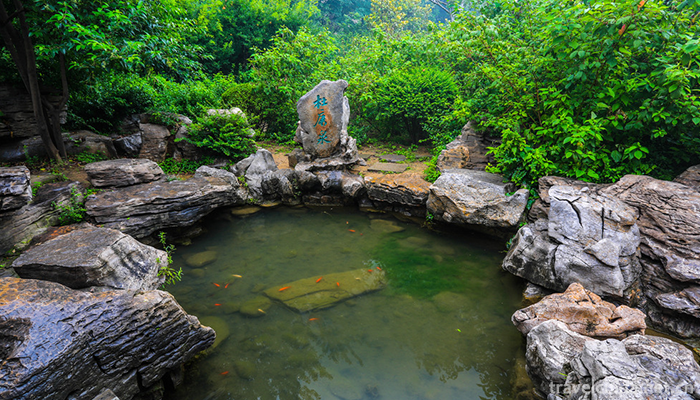
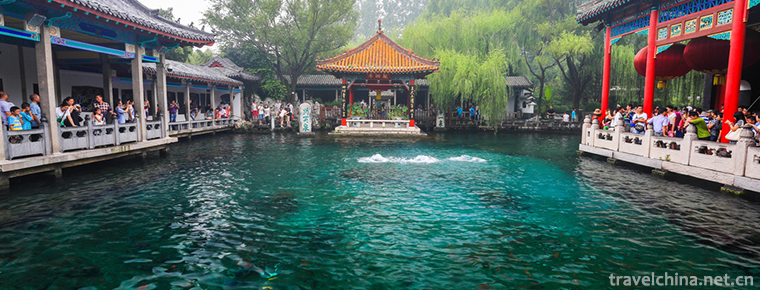
-
1.Karajun Scenic Area
Karajun is Kazakh, meaning "the wilderness on the ridge". Karajun Mountain is a stretch of mountains from east to west. On both sides of it are hills with ravines and combs
Time 2018-12-12 -
2.Shanghai Park Hyatt Hotel
Shanghai Park Hyatt Hotel is an exquisite modern Chinese-style residential hotel, located on the 79th to 93rd floors of Shanghai Global Financial Center, known as the Vertical Comprehensive Urban Area
Time 2018-12-16 -
3.Blue Moon Bay Hot Spring Resort
Lanyuewan Hot Spring Resort is the largest four-star garden-style foreign-related hotel and national AAAA-level tourist scenic spot in Western Guangdong. It is located in the quiet "Guangzhou Bay
Time 2019-01-29 -
4.Buddha Han boxing
Fohan boxing is also known as Fohan Chuan, commonly known as Buddhist boxing. It is a kind of traditional Chinese martial arts. This boxing originated in Shaolin Temple
Time 2019-04-29 -
5.High Density Gray Spring Festival Pictures
Gaomi gray-flushing New Year painting, also known as "folk freehand painting", is one of the national intangible cultural heritage of Gaomi folk traditional art in Shandong Province.
Time 2019-04-30 -
6.Hongdongs custom of visiting relatives
The custom of walking relatives in Hongdong is a kind of Han traditional folk culture which spreads in Ganting, Wucun, Xincun, Longma and Wanan townships
Time 2019-05-03 -
7.Xingtai plum blossom boxing
Plum Blossom Boxing is also called Plum Blossom Pile and Plum Blossom Boxing. One of the traditional Chinese martial arts. For the convenience of drilling, drilling on the ground is more extensive, kn
Time 2019-07-08 -
8.Yangzhou lacquerware decoration skills
Yangzhou lacquerware painting process is cumbersome, the step is "batch putty scrape gray, brush paint and push light". During the Warring States Period, Yangzhou lacquerware decoration tech
Time 2019-07-10 -
9.Legend of Zhuangzi
The legend of Zhuangzi is a folklore of Dongming in Shandong Province. Chuang Tzu, Ming Zhou, Zixiu. According to the Records of History, it is recorded as the Mongolian people in the Warring States P
Time 2019-08-10 -
10.Chengdu Technological University
Chengdu Institute of Technology is a public full-time general undergraduate school organized by the People's Government of Sichuan Province. Founded in 1913, the school is the first industrial school
Time 2019-08-31 -
11.Nanchong medical and health
By the end of 2019, Nanchong has 8457 medical and health institutions (including village clinics), including 166 hospitals and 8250 primary medical and health institutions. The number of beds in medical and health institutions was 43726, an increase of 4.9% over 2018
Time 2020-12-17 -
12.Animal resources in Meishan
There are many species of wild animals in Meishan City, and the floristic composition is more complex, mainly subtropical forest animals. There are 469 species of terrestrial wild (vertebrate) animals, including 91 species of mammals, 18 orders, 27 families, 65 genera,
Time 2020-12-18